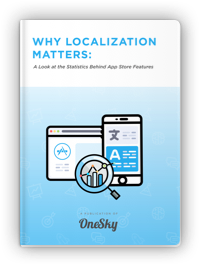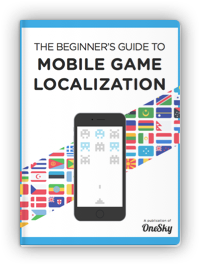APAC Marketing Mastery with Advanced Translation and Localization Strategies for Business Growth
The Asia-Pacific (APAC) region is a vibrant and expansive arena for software and SaaS companies, making APAC marketing a critical focus for businesses aiming to scale and innovate. Marked by its rapid economic growth and digital transformation, the region is one of the fastest-growing digital economies globally. According to an “e-Conomy SEA 2019” report by Bain & Co., the internet economy in Southeast Asia alone is expected to triple to $300 billion by 2025.
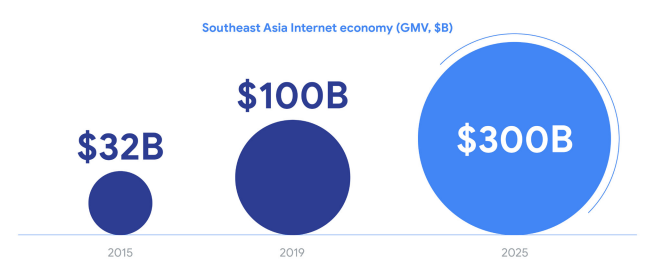
Source: Bain & Co.
Localized marketing strategies play a critical role in navigating the diverse and dynamic market. Success in APAC markets demands more than just translating content into multiple languages; it requires a deep understanding of the cultural nuances, consumer behavior, and local digital marketing trends. Effective localization addresses these aspects, enhancing customer experience and ensuring that marketing messages resonate well across different APAC countries.
In this article, we’ll review how you can leverage OneSky’s advanced translation technology and local insights to fine-tune your marketing strategies for the APAC landscape. We’ll explore the essential role of technology in streamlining the localization workflow and discuss the best practices that can help your business thrive in diverse markets from India to Australia and Japan to Indonesia.
Understanding APAC’s Diverse Market Landscape
The Asia-Pacific region is a rich tapestry of cultures, languages, and economic conditions, making it one of the most diverse areas in the world for business operations. This diversity extends from Japan and South Korea’s technologically advanced landscapes to India and Indonesia’s rapidly growing economies. Each nation within the APAC region harbors unique cultural norms, languages, and consumer behaviors, which significantly impact APAC marketing strategies.
Understanding these nuances is crucial if you’re aiming to conquer the APAC markets. For instance, while Australia and New Zealand present a more Westernized market environment, China, Korea, and Kapan require a deep understanding of local traditions and consumer etiquette. Similarly, Southeast Asia, including countries like Malaysia, Thailand, and the Philippines, shows a high preference for mobile-first internet access, which influences digital strategies, particularly in e-commerce.
Moreover, effectively utilizing social media and digital advertising requires an intimate understanding of local platforms. For instance, marketing leaders must leverage platforms like WeChat and QQ in China, Naver in Korea, and Line in Japan alongside global giants like Facebook and LinkedIn.
The APAC region offers a dynamic ecosystem that demands tailored marketing strategies. By embracing local insights and adapting to each country’s varied digital landscapes, you can effectively engage your target audience and optimize your ad spending across the region.
The Role of Localization in APAC Marketing
When it comes to localization in the APAC region, it’s more than mere translation. It involves a comprehensive cultural adaptation of content, visuals, and marketing campaigns to resonate deeply with diverse audiences across this versatile region. For software and SaaS companies, effective APAC marketing means not just converting text but also aligning colors, images, and UI design with local preferences and cultural norms.
Cultural adaptation helps ensure that marketing messages don’t just communicate but connect. For instance, while red is considered lucky in China and often used in marketing campaigns during festive seasons, it can signify danger in other cultures. Similarly, the use of mascots in Japanese advertising taps into the local affinity for Kawaii (cuteness) culture, which might not be as effective in other APAC countries like India or Australia, where consumer interests are influenced by different values.
Having a robust translation management system is vital to maintaining brand consistency and relevance by ensuring that all localizations are accurate and culturally appropriate across multiple languages and contexts. This is crucial in APAC regions, where a misstep in language or cultural references can significantly affect customer perception and brand trust.
A vigorous system manages translations and stores and learns from past marketing strategies, creating a repository of knowledge that can inform future localizations. This ongoing learning process is vital in regions as dynamic as the APAC markets, where linguistic nuances and cultural trends may evolve rapidly.
Adopting a proactive approach to localization enables you to enter and succeed in the competitive APAC market. By integrating comprehensive localization strategies, you can ensure your brand awareness remains strong and your marketing campaigns are impactful across diverse cultural landscapes.
Leveraging Technology for Localization Efficiency
In the rapidly evolving digital landscape of the APAC region, the use of advanced translation management platforms like OneSky has become essential for streamlining the localization process. These platforms utilize cutting-edge technologies to enhance the efficiency and accuracy of translations, making it an indispensable tool for companies looking to expand across diverse APAC markets.
OneSky offers a sophisticated suite of tools that simplify the management of complex localization projects. By automating many of the labor-intensive tasks associated with translation, such as text extraction and the reuse of previously used materials, OneSky can significantly reduce turnaround times and operational costs. This automation is particularly crucial in the APAC regions, where businesses often need to adapt their products and services for multiple languages and cultural contexts rapidly.
The integration of AI and machine learning further enhances these benefits, enabling OneSky to learn from past translations and improving the quality and consistency of the output over time. The advanced AI algorithms analyze vast amounts of language data to suggest the most accurate, contextually appropriate translations, reducing the likelihood of errors and the need for costly revisions. For example, machine learning models can detect nuances in Japanese politeness levels or Chinese regional slang, ensuring that translations are not only correct but culturally tailored.
The impact of these technologies on digital marketing and customer experience can be profound. By enabling quicker and more accurate translations, you can launch marketing campaigns and roll out apps or updates more swiftly in APAC countries, keeping pace with local market demands and staying ahead of competitors. There is also significant cost savings in choosing to utilize these technologies in localization.
For businesses operating in technology-driven markets like Singapore, Hong Kong, and South Korea, leveraging these advanced translation technologies is not just an advantage – it’s a necessity. The ability to quickly and effectively localize content can make a significant difference in capturing and maintaining brand awareness in these competitive environments.
Best Practices for APAC Marketing Success
Engaging effectively with APAC markets requires a nuanced understanding of local digital strategies, particularly the use of social media platforms and mobile marketing techniques that are preferred in the region. For successful APAC marketing campaigns, you can leverage these tools to connect with internet users who are increasingly shopping online and heavily influenced by online social networks.

Source: Oberlo
Utilizing Local Social Media Platforms
In China, platforms like WeChat and Weibo dominate the social media landscape, offering unique features for interactive marketing and e-commerce. Similarly, Line is the platform of choice in Japan and Thailand, providing businesses with extensive options for personalized direct messaging and promotional campaigns. Integrating these platforms into your marketing strategy allows for targeted messaging that resonates with local cultural and social norms.
Mobile Marketing Techniques
With high mobile penetration rates in countries like South Korea, Indonesia, the Philippines, and India, mobile marketing has become a cornerstone strategy. This includes SMS marketing, mobile-friendly websites, and mobile apps optimized for local languages and preferences. These strategies ensure the customer experience is seamless and engaging, driving higher brand awareness and conversions.
Smallpdf’s Big Success
Smallpdf, a SaaS company founded in 2013, experienced rapid growth, reaching over 15 million users monthly due to its simple, user-friendly PDF tools. However, as the company expanded its offerings in 17 languages, the challenge of maintaining efficient, high-quality localization became evident.
Previously relying on freelancers led to delayed and inconsistent SEO outcomes, negatively affecting site updates and user engagement. By partnering with OneSky, Smallpdf revolutionized its localization process, enabling translations within 1-2 days across all languages, which previously took weeks. This shift improved SEO alignment and significantly enhanced user traffic and satisfaction.
The addition of languages like Thai resulted in a user base increase of over 500% in one year, contributing to a 60% surge in monthly users from 6 million in 2016 to over 9.5 million in 2017, with a substantial portion of the growth in non-English speaking markets like China and India.
UEFA’s Victory Goal
UEFA, the administrative body for football in Europe, faced the complex challenge of delivering real-time updates in multiple languages across various platforms during significant events like the EURO Championship. With a global fanbase of 3.5 billion, ensuring a local feel in communications was crucial. The 2016 EURO, featuring 24 teams and attracting millions of attendees and viewers, highlighted the need for a robust, instantaneous translation service.
Partnering with OneSky allowed UEFA to integrate a Translation Management System (TMS) that efficiently managed the translation needs across UEFA’s web and mobile platforms. This integration resulted in seamless daily updates to 300,000 new users and facilitated 4 million app downloads in 8 languages during the tournament.
The ability to update the EURO website’s content hourly in 11 languages ensured that fans worldwide enjoyed a localized, engaging experience, significantly enhancing fan engagement and interaction during the event.
Overcoming Challenges in APAC Marketing
Navigating the APAC market presents unique challenges for companies looking to expand their presence in this dynamic region. Among the most significant hurdles are regulatory issues, language barriers, and the inherently high competition that characterizes these markets. Each factor requires a tailored approach to ensure successful market penetration and sustained growth.
Regulatory Challenges
APAC countries often have strict and varied regulations that can impact marketing activities. For instance, data protection laws in Singapore and advertising regulations in China differ significantly, requiring companies to adapt their strategies accordingly. Compliance with these regulations is crucial to avoid penalties and maintaining your company’s reputation.
Language and Cultural Barriers
The linguistic diversity of the APAC region means that you must often translate and localize your content into multiple languages to reach target audiences effectively. This goes beyond mere translation; it involves cultural adaptation of marketing messages to resonate with local consumers, acknowledging local customs, values, and taboos.
Competitive Landscapes
APAC markets are also marked by intense competition, not only from local businesses but also from international companies trying to establish a foothold. This environment demands that businesses differentiate themselves and tailor their marketing strategies to stand out.
Enhancing Marketing Agility with TMS
Adopting a robust translation management system like OneSky can address these challenges by providing an agile and responsive framework for marketing strategies. These systems streamline the process of translating and localizing content at scale, ensuring consistency and accuracy across all communications. This capability is crucial for maintaining brand awareness and customer experience in diverse markets.
Moreover, such systems facilitate quicker adaptations to regulatory changes, enabling companies to comply with new laws as they evolve. The agility offered by automated translation tools means that businesses can respond swiftly to competitive pressures and market opportunities, enhancing their ability to compete in bustling markets like India, China, and Indonesia.
Elevate Your APAC Marketing with OneSky
In the diverse and competitive landscape of the Asia-Pacific region, OneSky’s translation management platform enables businesses to navigate the complexities of APAC marketing effectively. OneSky is specifically designed to handle the multifaceted challenges of translating and localizing content across multiple languages and cultural nuances, ensuring that your marketing efforts resonate with local audiences.
OneSky’s deep understanding of local regulations and cultural subtleties ensures that all marketing entries are effective and compliant with local standards. This expertise allows businesses to avoid common pitfalls related to cultural misunderstandings or non-compliance with local marketing laws, which can be expensive and damaging to brand reputation.
Expand your reach and enhance your impact across the APAC region with OneSky’s comprehensive solution. From digital marketing initiatives to comprehensive customer experience enhancements, OneSky provides the tools you need at pocket-friendly prices to ensure that your message is clear, culturally aligned, and compelling without spending a fortune.
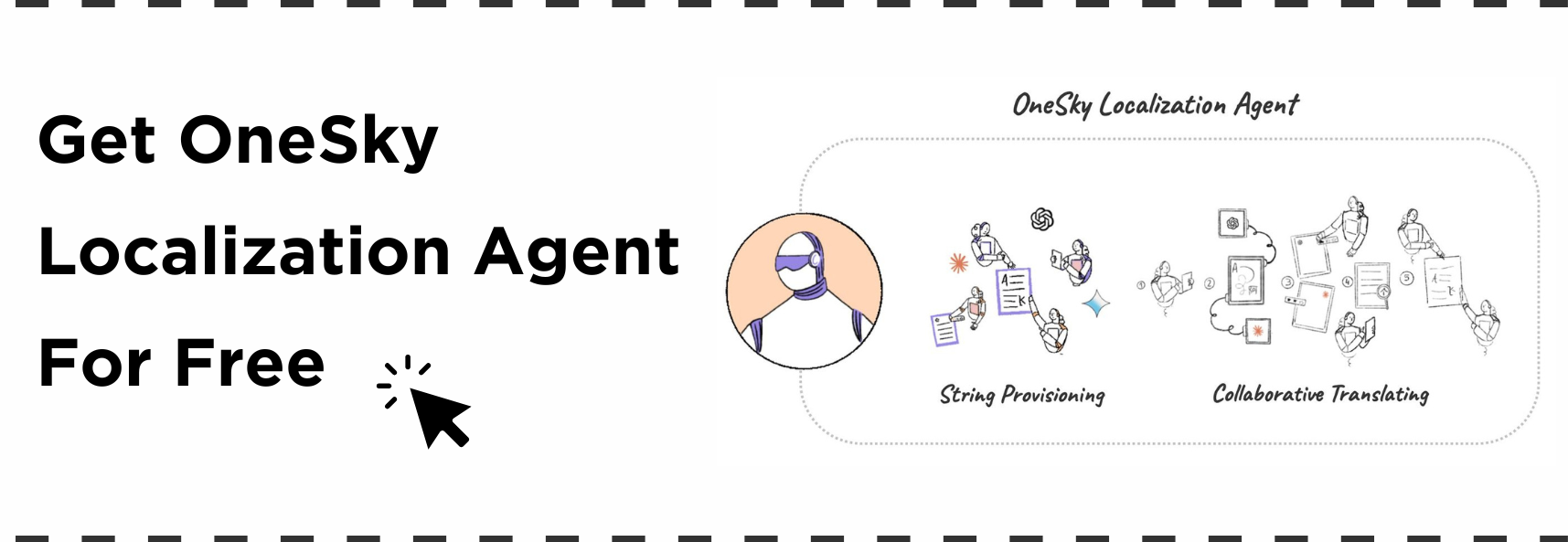

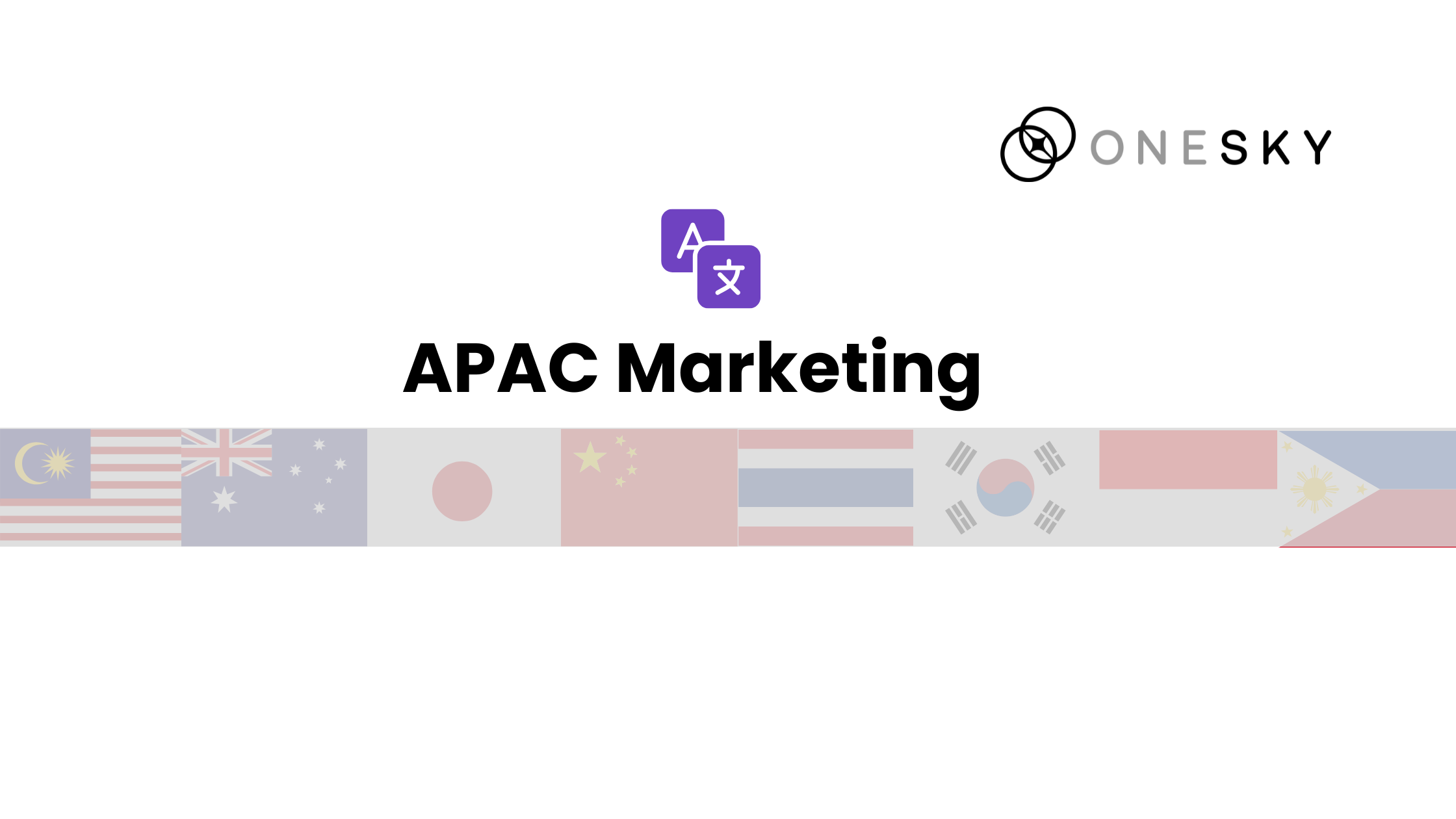



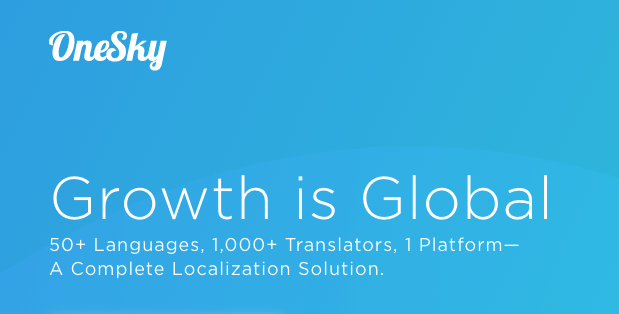

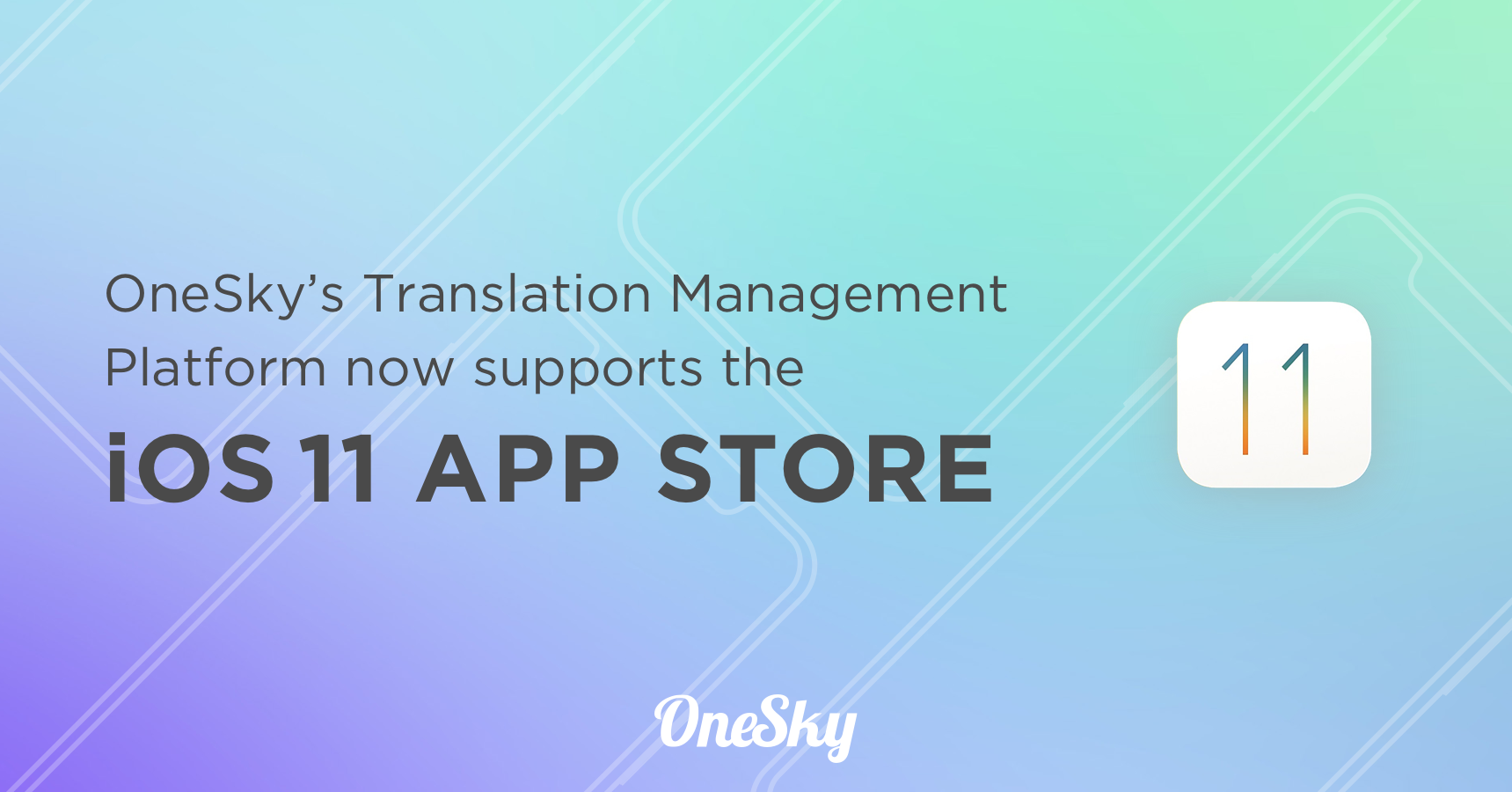
 Written by
Written by 

